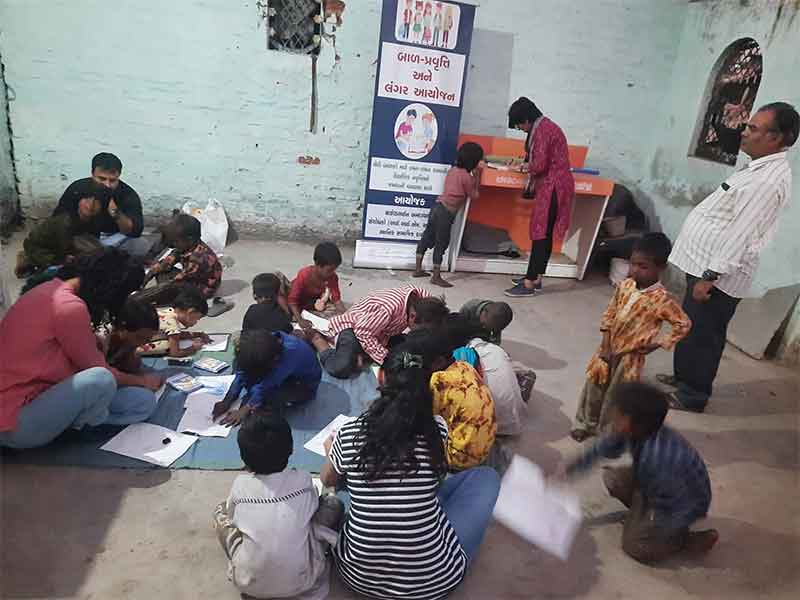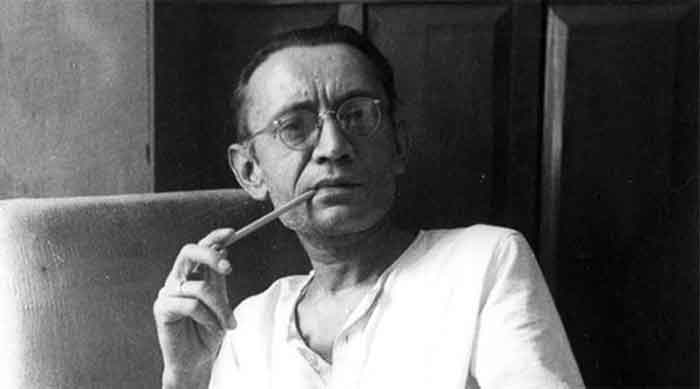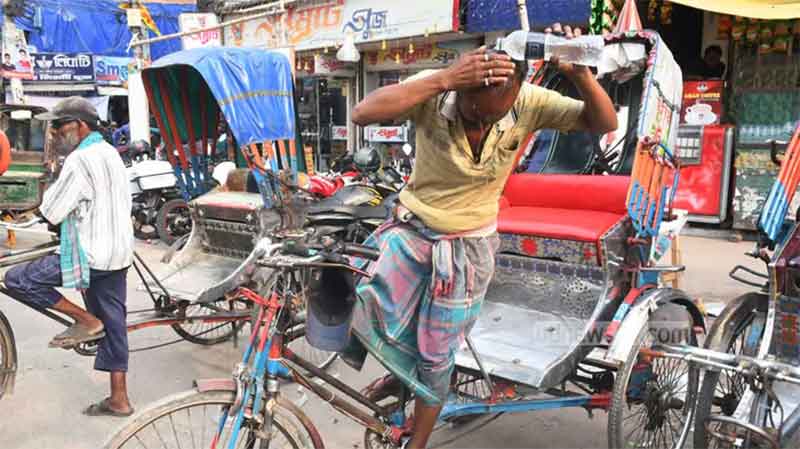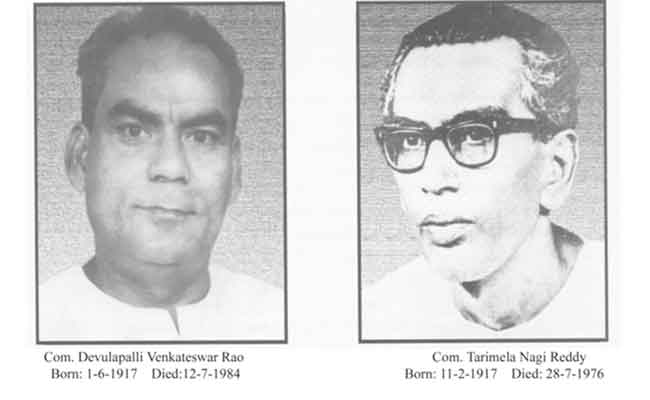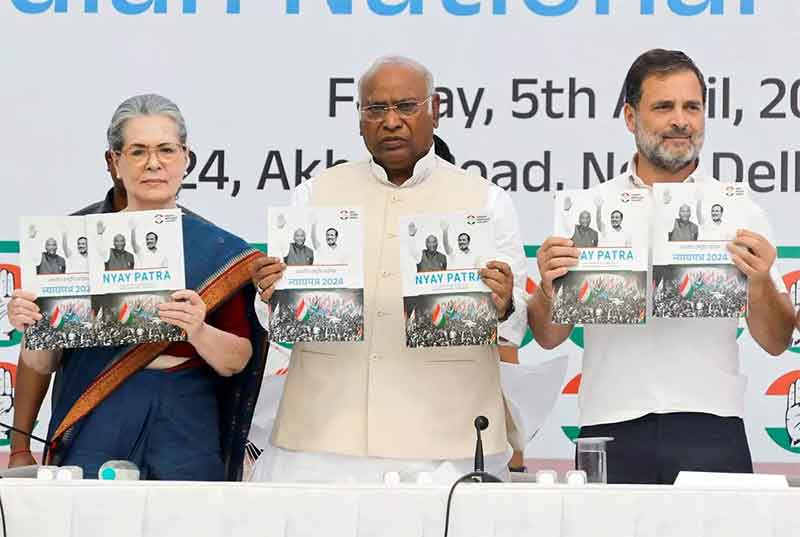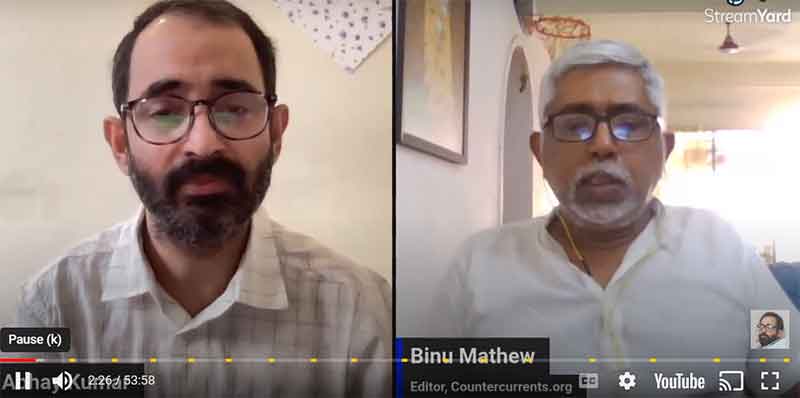‘El sueno de la razon produce monstruos’ (The sleep of reason produces monsters) – Francisco Goya, the famous Spanish artist, in his note to his etchings called `Los Caprichos’, made in 1799.
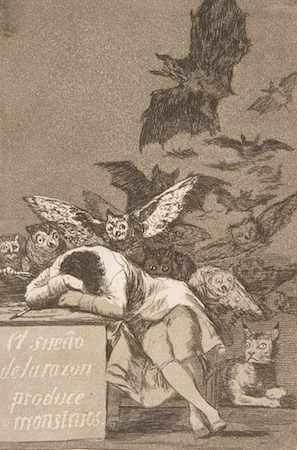
Goya’s words – and his paintings that he did later (during 1820-23) depicting a dark vision of his surrounding reality – arouse ominous echoes in our society today. The news reports of hundreds of women devotees (apparently belonging to the post-menstrual stage) gathering at the door steps of the Sabarimala temple to prevent their junior female devotees (who are still in the menstrual stage) to approach the temple, have thrown up a multi-dimensional problematic – (i) the intra-gender conflict between the traditionally brought up mothers and the new generation of their daughters, who do not consider menstruation as pollution; (ii) the internalization of the patriarchal values and norms by sections of Kerala women, who even when they had had a long tradition of matrilineal rights, along with the privilege of modern education, seem to measure their safety in the chains of patriarchal families ; and (iii) the larger issue of the persistence of popular religious adherence to certain customs and practices which violate the provisions that guarantee equality to all citizens under our Constitution, and which also transgress the norms laid down by the Universal Human Rights Convention.
This particular issue again is rooted to the more fundamental problems that plague us in India – (i) how to solve the conflict between religious faith in traditional obscurantist beliefs and inhuman superstitious practices on the one hand, and scientific reasoning that challenge them on the other ? (ii) to what extent can we permit freedom of religious propaganda to co-exist with the obligation to create a scientific temperament (both guaranteed under the Constitution) ? , and more recently (iii) how to deal with the increasingly aggressive assaults unleashed by the militant followers of religious faith on the non-violent proponents of scientific temperament (e.g. the killing of prominent rationalists in Maharashtra and Karnataka, and journalists who dared to disseminate dissident news and views) ?. All the three problems mentioned above are not peculiar to Hindu society alone. They pose a challenge to all those dissidents among the Muslim, Christian, Sikh, and other religious minorities, who dare to question and defy their respective clergy and their fatwas or diktats. There are Muslim women who are asserting their rights based on the purely rational grounds of gender equality, there are Christian and Sikh women challenging the patriarchal religious diktats by demanding self-protection and claiming their rights to property. They are being trolled and threatened by religious bigots and clergy from within their respective communities.
A national journey of sleep-walking

The newspaper pictures and TV visuals of hordes of women screaming against the Supreme Court judgment that asked the Sabarimala temple to open it up to all women pilgrims, reminded me of a painting of Goya’s called the Witches’ Sabbath’ (1820-23) which depicted a group of murderous looking women indulging in a ritual. In both his earlier series of Los Caprichos’ etchings and the later series of Black Paintings’ (of which the Witches Sabbath’ was a part), Goya was trying to dispel the dark superstitious beliefs, and caricature the customs following from them, which were prevalent during his times. He wanted to expose them to the light of reason. When reason sleeps, loathsome monsters crawl out from the underbelly of religious superstitions, racial prejudices, and obscurantist patriarchal norms among other such hidden crevices of society, who goad the sleepers to a sleep-walking journey of murderous orgy. The mob that gathered at Sabarimala are heirs to the Spanish pilgrims whose fanatical faces Goya captured in his painting `The Pilgrimage to San Isidro.’ With their eyes wide-open, some in awe, some in frenzy, some breaking out in delirious songs, they are marching towards a religious centre – followed by gentlemen in hats and their hooded womenfolk.

This painting made more than two hundred years ago , can well pass off as a scene from modern India – where all through the years, pilgrimages have been turned into occasions of mass frenzy. Take for instance the processions carried out every year during the monsoon season, through the national highways and roads in north India by the Kanvarias’ - devotees of Shiva from all parts of India, who carrying water-containers on their shoulders walk all the way to Haridwar to collect holy water from the Ganga river and walk back to their homes. During this journey - both ways - these Kanvarias’ take over the highways and block public traffic, raid road-side shops for food and drinks, and create a raucous nuisance by fighting with the local people – all the while singing hymns in praise of their lord Mahadeva ! Or consider again the scramble among Hindu devotees during the Kumbh Mela to take a bath in the holy river, or to have a sight of the image of some deity in a temple, or similar other religious assemblage, which lead to stampedes killing hundreds every year. The latest case is the October incident in Amritsar this year when the crowd of devotees, mad to watch the burning of the effigy of Ravana during the Dussehra festival, chose to spill over to the railway tracks – despite warnings from the police – where some sixty of them lost their lives by being mowed down by a running train.
Such instances of sleep-walking induced by religious sentiments (which may be termed as `false consciousness’ as described by Karl Marx) are not confined to the Hindu community. By now it is a familiar story (which captured media headlines) which tells us of the plight of some women in Kerala who walked into a Christian nunnery, and became victims of a predatory priest. We again hear about a young Muslim girl who had joined a madrasa in search of religious teaching in Ghaziabad, but who ended up as a victim of rape by the maulavi, according to a newspaper report of April 26, 2018. Let us also recall the complaints of the women victims of rape by their guru Ram-Rahim and Asha Ram Bapu in their respective ashramas – which are pending in the courts.
What is alarming is the manipulative nature of enchantment that these godmen have over their followers. When Ram Rahim was taken into custody, thousands including women, came out in the streets in protest, which led to a serious law and order situation in the neighbourhood. Similar demonstrations (again by women disciples) followed Asharam Bapu’s arrest. It is shameful that these female disciples preferred to retain their faith in the godmen instead of heeding to the voices of their victims – their co-religious sisters – who were raped by them. Such steadfast popular devotion to religious charlatans, who go by names like Baba’ or Maharishi’ or Guru’, is sustained by these godmen through the use of spectacles and miracles that alter the consciousness of their disciples. Temporary cures of ailments, or hallucinations of a divine world (brought about usually by drugging the disciples with so-called magical herbs or drinks) attract hordes of gullible people to their ashramas.’
Their attraction is rooted to a bio-evolutionary heritage amongst our people. We tend to be fascinated by the extra-worldly, the super-human, the surreal, the supernatural. While some among us, from a safe distance, find satisfaction by reading ghost stories, science fiction or novels about super-human detectives, others seek similar delights by physically participating in collective religious rituals and gatherings that give them a sense of the surreal or the supernatural. Well, each should be left to one’s own path of choice ! If the devotees choose to suffer rape for years, or die in stampedes, or being mowed down by a train, it is their individual choice. However much we sympathize with their present plight, we should also remind them that they themselves are responsible for following rapacious gurus, and joining unruly crowds in pilgrimages.
How to wake up the sleep-walkers ?
We can afford to leave these devotees and pilgrims to themselves in their suicidal trips which they have chosen. But when the ruling powers try to institutionalize their superstitious beliefs and practices, and encourage such practices to turn into acts of fanatical violence against rationalists and secular forces, they destroy the basic spirit of our Constitution which is committed to develop `scientific temper’ among our people. Such mis-direction of religious faith into the dark alleys of violence – whether by the Hindu Sangh Parivar, or the Islamist and Khalistani terrorist outfits – poses a challenge to secular political forces and civil society activists, as well as others who want to intervene in the political discourse and praxis.
How can this vast reservoir of human resources, comprising murderous mobs of religious fanatics today, be changed into a vigorous body of enlightened masses who can transform India into a humanitarian society under a political order that ensures economic equity, social justice and democratic rights ? It is a long haul that requires collaboration among members of Left and secular political parties, social activists and champions of human rights , radical Dalit and Adivasi organizations, fighters for feminist and transgender rights, among other similar dissident groups.
Sumanta Banerjee is a political and civil rights activist and social scientist



